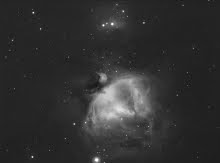The term "extinction" means the loss of light in the atmosphere from a beam of starlight. Because the extinction is generally larger at short (blue) wavelengths the effect is much stronger in blue light than in red light. At the zenith the influence is minor but it increases with a decreasing altitude of an object in the sky because at lower altitudes light has to travel through more air (see figure below).
 Wavelengths from 400nm to 700nm are transmitted with approximately equal efficiency at the zenith, but as the angle of elevation of an object approaches the horizon, blue transmission is extinguished much more than red. Green extinction is somewhere in between. For "True color" astro imaging this effect have to be taken in account, specially at lower altitudes.
Wavelengths from 400nm to 700nm are transmitted with approximately equal efficiency at the zenith, but as the angle of elevation of an object approaches the horizon, blue transmission is extinguished much more than red. Green extinction is somewhere in between. For "True color" astro imaging this effect have to be taken in account, specially at lower altitudes.

True color imaging
For true color imaging the above mentioned factors have to be taken into account.
Example : We want to make a true color image of an object at 30° altitude.
Example : Which RGB weight is needed for this true color image?
# CCD response is R : G : B = 1,00 : 0,74 : 0,77
# Extinction correction is R : G : B = 1,00 : 1,08 : 1,15 (see graph above)
The total RGB weight for this image will be R : G : B = 1,00 : 0,80 : 0,83
Therefore a set of exposure times could be R : G : B = 60 : 48 : 50 seconds.








